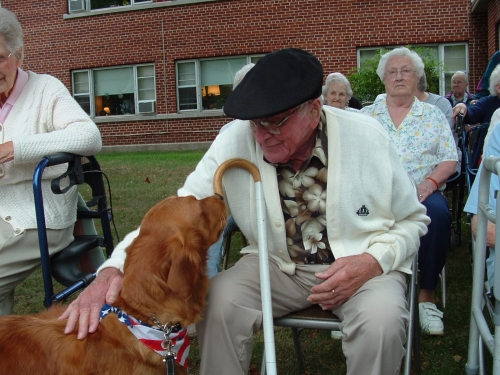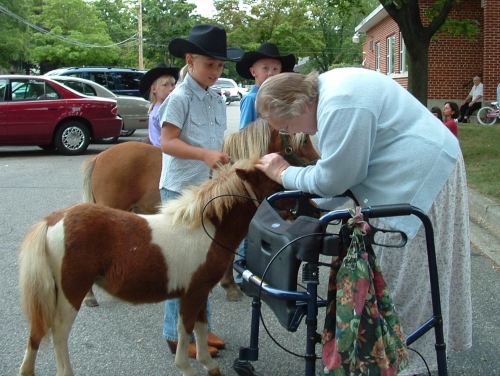Pet therapy: A community service with benefits for all involved
Dogs, cats, goats, birds and even equine can provide community pet therapy services, benefiting all involved.
 “Visiting
pets” or “pet therapy” are a couple of the names that residents at various
nursing homes and health care facilities have come to know as they anxiously
await volunteers with their animals. Many youth-serving organizations such as Michigan
4-H
are models to follow in community service as they participate in these informal animal-assisted activities. The
animal individuals are most familiar with is the canine. In the 4-H Dog Curriculum , details
are provided on what a therapy dog or therapy pet is. These programs enable animals
help people just by informally visiting with them. The Ohio 4-H Pet PALS program is another example
of
“Visiting
pets” or “pet therapy” are a couple of the names that residents at various
nursing homes and health care facilities have come to know as they anxiously
await volunteers with their animals. Many youth-serving organizations such as Michigan
4-H
are models to follow in community service as they participate in these informal animal-assisted activities. The
animal individuals are most familiar with is the canine. In the 4-H Dog Curriculum , details
are provided on what a therapy dog or therapy pet is. These programs enable animals
help people just by informally visiting with them. The Ohio 4-H Pet PALS program is another example
of  4-H providing this service to the community.
4-H providing this service to the community.
There are formal treatment programs with different aspects of animal therapy. For example, in a related Michigan State University Extension News article, readers learn about the use of equine as a therapeutic tool. Animal-assisted therapy programs usually involve one particular animal and a handler assigned to one particular person. There are specific goals to accomplish and a plan to be followed. The most commonly understood term is "visiting dog” or “visiting animals.” Most domestic animals are suitable for serving this purpose. The essential elements will be the same weather it is a cat, dog, bird or a miniature horse. Dogs are the most common pet visitors, but miniature horses are growing in popularity. In most cases, evaluation of whether the pet is a good prospective visitor will be the same regardless of the species.
The youth who come visiting with animals can provide entertainment that distracts patients from pain, helps them feel less lonely and lessens the sadness of depression. These visits can also provide a welcome change from a boring routine, create new friendships and give them something to look forward to. It has been shown that people become more active and responsive during and after visiting with animals. The stroking of a dog or cat can reduce a person's blood pressure and the petting encourages physical use of one’s muscles and joints as the individual stretches and turns them. This community service can be provided for the young and old alike. For example, at-risk youth in Wyoming can participate in a 4-H animal care program.
This program encourages nurturing traits through the interaction of animals as it helps at-risk youth display less antisocial behavior. The benefits continue even after the visits – they leave behind good memories, offers something for people to share and encourage new friendships.



 Print
Print Email
Email


